The aim of the study was to evaluate the microbiological effectiveness of a herbal mouthwash containing the leaves of Psidium guajava (Guava), peels of citrus aurantium (orange), peels of citrus limon, peels of Punica granatum, bark of Cinnamomum zeylanicum (cinnamon against Chlorhexidine mouthwash. Also Quality control parameters like physiochemical, phytochemical and FT-IR analysis (for identification of compounds) were done on developed poly herbal mouthwash formulations. Aqueous extract of Poly herbal formulations was prepared. Standard cultures of, Escherichia coli and Basillus subtilis was used for the study. The antibacterial test used was the agar well disk diffusion method. Marketed formulations of chlorohexidine were compared. In qualitative phytochemical screening, the extracts revealed the presence of primary and secondary metabolites such as carbohydrate, protein, flavonoid, saponin, tannin and sterols. The FT-IR spectral studies of the poly herbal extracts and poly herbal mouthwash preparations have indicated the presence of phytoconstituents compounds. This compound is reported to have wide applications. These results showed that the herbal mouthwash has significant antibacterial activity and the present preparation is able to inhibit bacterial growth in oral cavity. The association of oral microbial load on oral diseases is well established.
Poly herbal Mouthwash, anti-bacterial activity, Chlorohexidine.
A mouthwash is a medicated liquid which is held in the mouth and swished by the action of perioral musculature to eliminate the oral pathogens. Chlorhexidin is a golden chemical antiplaque, however, it may cause side effects in long usage1 To overcome the side effects of artificial chemical drugs, it is recommended to search for naturally occurring substances, such as plant extracts, which offer well-tolerated, delicate, and low cost drugs with lower side effects Various herbal extracts such as leaves of Psidium guajava (Guava), peels of citrus aurantium (orange), peels of citrus limon, peels of Punica granatum, bark of Cinnamomum zeylanicum (cinnamon) have shown therapeutic effects in the oral cavity when used as mouthwashes2. Herbs and plant extract have been used in oral hygiene products for many years3,4. Naturally occurring antimicrobial herbs can be used individually or in combination in the formulation of mouthwash and also in addition will be cheap, highly biocompatible, and possess extra activity such as anti-inflammatory, wound healing property, antioxidant property5. Punica granatum is a commonly found fruit, is found to be beneficial in maintaining oral health. Pomegranates contain polyphenols, tannins, ellagic acid and anthocyanins. These compounds are powerful antioxidants that are effective against oral bacteria and have an antimicrobial activity. Lemon peel is rich in alkaloids, which are having anticancer activities and the antibacterial potential in crude extracts of different parts6. The Citrus aurantium peel contains flavonoids, which have anti-fungal, anti-inflammatory and antibacterial properties. Cinnamon bark has been used for spicy and traditional medicine. Cinnamon bark is containing the essential oil is cinamaldehyde (60.72%), eugenol (17.62%) and coumarin (13.39%) which has antibacterial effect7.
II. MATERIALS AND METHODS
Collection of plants
Leaves of Psidium guajava (Guava), peels of citrus aurantium (orange), peels of citrus limon, peels of Punica granatum, bark of Cinnamomum zeylanicum (cinnamon) were randomly collected from mature plants.
Extraction Process
Total 20g of Poly-herbal powder of selected parts of herbs in the proportion (Psidium guajava, citrus aurantium, citrus limon, Punica granatum, Cinnamomum zeylanicum 1: 0.25: 0.25: 1.5: 1: 1 respectively) was macerated using 50 ml mixture of water. By cold maceration method and then filtered. The filtrate was concentrated to yield 5 ml of a semisolid extract.8
Physico-Chemical Parameters
The determination of various physicochemical parameters such as total ash, acid insoluble ash, water soluble ash, water soluble extractive value, alcohol soluble extractive value, swelling index, foaming index, moisture content, ash value, pH were calculated as per Indian Pharmacopoeia9,10.
Preliminary Phytochemical screening
For preliminary Phytochemical screening, 100 g of powder drug was extracted with Distilled water. The plant extract obtained from successive solvent extraction were then subjected to various qualitative chemical tests to determine the presence of various Phytoconstituent like glycosides, phytosterols, fixed oils and fats, alkaloids, proteins and amino acids, flavonoids, saponins, gums and mucilage etc11.
Fourier Transform Infrared Spectrophotometer (FTIR)
Fourier Transform Infrared Spectrophotometer (FTIR) is perhaps the most powerful tool for identifying the types of chemical bonds (functional groups) present in compounds. The wavelength of light absorbed is characteristic of the chemical bond as can be seen in the annotated spectrum. By interpreting the infrared absorption spectrum, the chemical bonds in a molecule can be determined. Dried powder of different solvent extracts of each plant materials were used for FTIR analysis. 10 mg of the dried extract powder was encapsulated in 100 mg of KBr pellet, in order to prepare translucent sample discs. The powdered sample of each plant specimen was loaded in FTIR spectroscope (Shimadzu, IR Affinity 1, Japan), with a Scan range from 400 to 4000 cm 1 with a resolution of 4 cm 112.
Anti Bactial Activity of Poly Herbal Mouth Wash
Preparation of mouthwash
The extract of Poly-herbal powders was formulated by using pharmaceutical excipients like Soothing and Cooling agent (menthol), Thickening agents (propylene glycol) and Flavoring agent (clove oil), into a mouthwash13. The formulation was prepared using 5 % w/v of poly-herbal extract. 100 g of the powder was suspended in polyethylene glycol, and distilled water of 900 ml and was allowed to evaporate to get the final concentrate. The final concentrate was then diluted with sterile distilled water to make a mouthwash of 5 % (w/v) concentration. Two tablespoons of honey and mint extract were added as a natural sweetener and flavoring agent, respectively14.
Evaluation Of Poly Herbal Mouth Wash Preparation
Color, Odour and taste:
Physical parameters like odour, taste and color were examined by visual examination15.
pH
pH of prepared herbal mouthwash was measured by using digital pH meter. The pH meter was calibrated using standard buffer solution about 1 ml of mouthwash was weighed and dissolved in 50ml of distilled water and its pH was measured16.
Stability
The formulation and preparation of any pharmaceutical product is incomplete without proper stability studies of the prepared product17.
Anti-Bacterial Activity Of Poly Herbal Mouth Wash
The concentration (5 mg\ml) of poly herbal mouthwash was prepared. The concentration was prepared in their respective solvents. The antibacterial activity of poly herbal mouth wash extract was screened by disc diffusion method. Firstly prepared the extract disc by using WhatmanNo-1 filter paper with the help of punching machine and then autoclaved. Soaked the discs in already prepared concentration of poly herbal mouth wash and left overnight18. Prepared the petriplate with suitable agar media (already prepared and autoclaved). Spread the bacterial strains on their respective agar media. Test for poly herbal mouth wash loaded disc were placed on respective bacterial and then incubated at suitable temperature i.e. 37?C for bacteria. After incubation period, the zone of inhibition was measured and recorded .Similarly standard mouthwash chlorohexidine was used instead of test herbal mouth wash for comparative study of test herbal mouth wash19.
RESULTS AND DISCUSSION
Physico-Chemical Parameters
Ash value
The ash values such as total ash, acid insoluble ash, water soluble ash, and sulphated ash of poly herbals mouth wash was determined and the results were shown as table 1.
Table 1 Ash value of poly herbals mouth wash.
Table 1 Ash value of poly herbals mouth wash
|
|
% yield of poly herbals powders
|
|
Total ash
|
19.1
|
|
Acid insoluble ash
|
13.2
|
|
Water soluble ash
|
11.4
|
|
Sulphated ash
|
14.3
|
Extractive values
The extractives value such as chloroform, petroleum ether, ethanol, water and ethyl acetate of poly herbals mouth wash was determined and the results were shown as tables 2.
Table 2 Extractive value of poly herbals mouth wash
|
|
|
% yield of poly herbals powders
|
|
|
Chloroform
|
5.4
|
|
Petroleum ether
|
4.2
|
|
Ethanol
|
6.4
|
|
Water
|
8.1
|
|
Ethyl acetate
|
2.7
|
Moisture content (Loss on drying)
The moisture content value of poly herbals mouth wash determined and the results were shown as table 3.
Table 3 Moisture content value of poly herbals mouth wash
|
|
|
% yield of poly herbals powders
|
|
|
1st Time interval
|
6.5
|
|
2nd Time interval
|
6.3
|
|
3rd Time interval
|
5.9
|
Phytochemical studies of poly herbals mouth wash
The preliminary phytochemical studies reveals that the presence of phenols, tannins, flavanoids, alkaloids and saponins (Table 4). Many plants are now used for the traditional treatment of diseases, possibly due to the presence of these phytochemicals, which have been reported to possess high medicinal value. Phenols, flavonols, proanthocyanidins and flavonoids are very important plant bioactive component reported to possess strong antioxidant, antibacterial and numerous biological activities.
Table 4 Phyto-constituents of poly herbals mouth wash
|
|
Aqueous extract of poly herbals mouth wash
|
|
Alkaloids
|
+
|
|
Flavonoids
|
+
|
|
Protein
|
-
|
|
Glycosides
|
-
|
|
Terpenoids
|
+
|
|
Tannins
|
-
|
|
Carbohydrates
|
+
|
|
Saponins
|
+
|
Fourier Transform Infra-Red Spectroscopic analysis (FT-IR)
In FT-IR spectroscopy, functional groups and their numbers were identified from the frequency of radiation that absorbs infrared spectra which showed the main chemical groups in extract and PC as well as the formation of new interactions between them in the poly herbals mouth wash preparation process (Table 5). The FT-IR spectroscopy of poly herbals extract (S-I), poly herbals mouth wash preparation (S-II) are shown figure 1, 2.


 Anitha Pramanayakam*
Anitha Pramanayakam*
 Sowmya C.
Sowmya C.
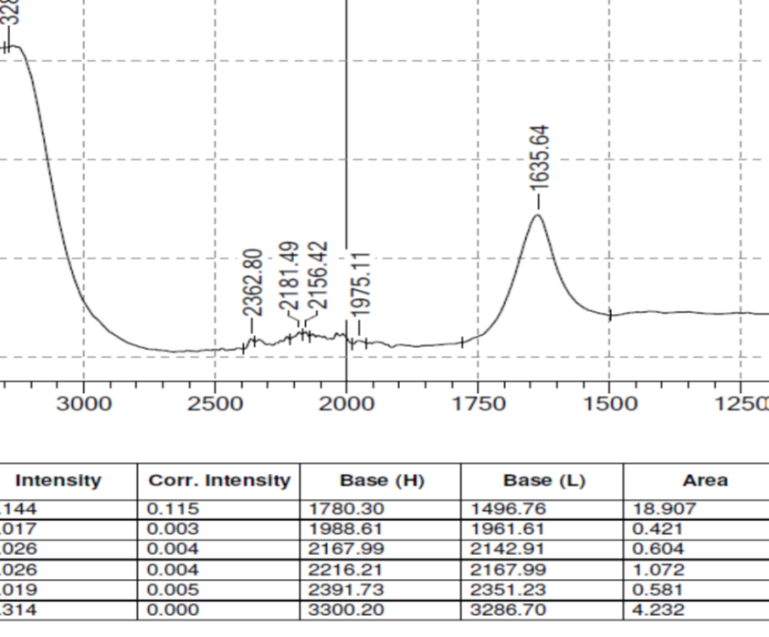
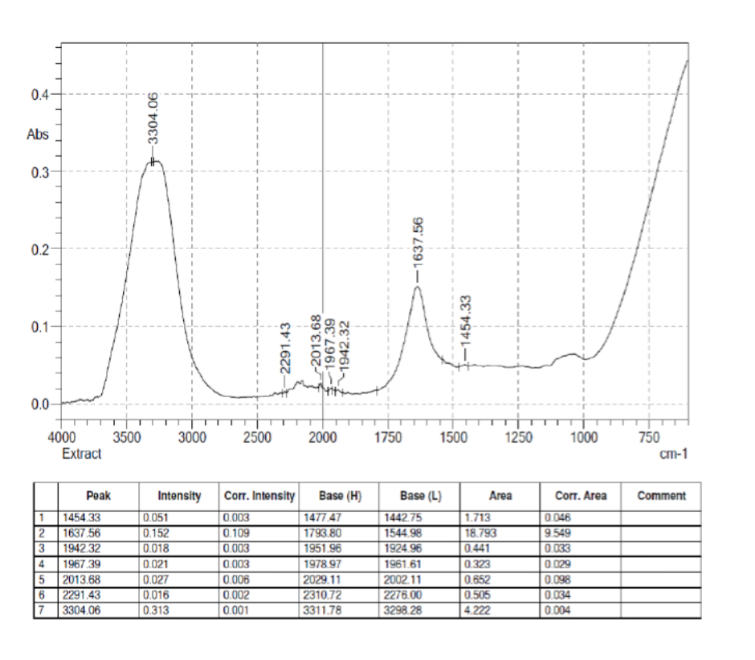
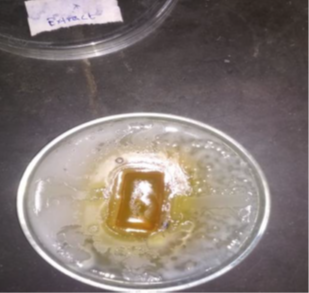
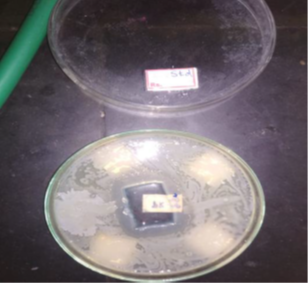
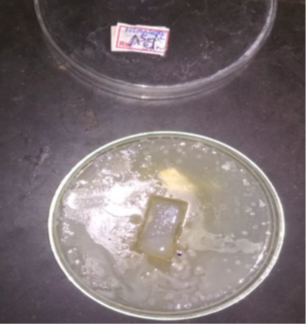
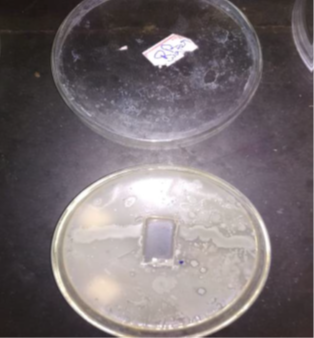
 10.5281/zenodo.14752691
10.5281/zenodo.14752691